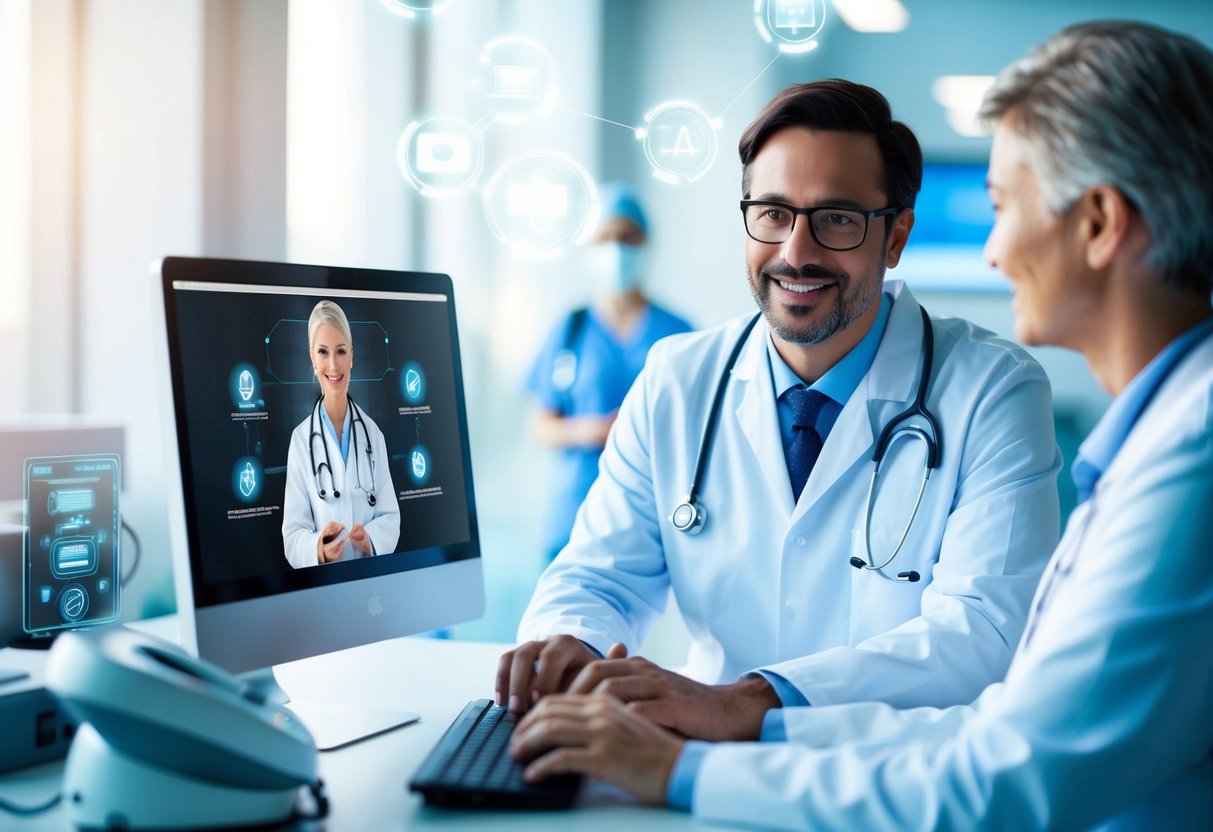
Remote Patient Monitoring and Disease Management
Remote patient monitoring is transforming health solutions by enabling continuous tracking of vital signs and improving disease management. This approach facilitates medication adherence and helps in understanding disease progression, providing personalized care for individuals.
Utilizing Remote Devices for Patient Vitals and Signs
Remote devices are essential in monitoring vital signs such as heart rate, blood pressure, and oxygen levels. These tools collect real-time data that healthcare providers can access and analyze.
They offer significant benefits, including timely interventions and reduced hospital visits. The integration of wearable technology with smart devices provides seamless tracking. It allows for early detection of potential health issues.
Patients gain a sense of autonomy from these devices, offering peace of mind regarding their health status. The data collected can also contribute to richer datasets for healthcare research. This ongoing revolution is paving the way for more proactive healthcare.
Strategies for Medication Adherence and Disease Progression
Improving medication adherence is crucial in managing chronic diseases and slowing disease progression. AI-driven applications remind patients to take medications on time, track compliance, and even suggest adjustments.
Automated alerts are particularly useful for those with complex medication regimens. These strategies help identify patterns related to disease progression by analyzing patient data over time.
Healthcare providers can adjust treatment plans based on continuous monitoring. By personalizing care, the likelihood of successful disease management increases. This approach not only benefits patients but also optimizes healthcare resources, reducing unnecessary interventions.
Integrating Telemedicine into Existing Healthcare Models
Incorporating telemedicine into contemporary healthcare frameworks presents opportunities to enhance care accessibility and focus on patient-centered outcomes. Telehealth innovations are being applied both in critical and primary care scenarios, while value-based care models gain prominence.
Case Studies: Telehealth in Critical and Primary Care
Telemedicine has emerged as a vital component in both critical and primary care settings. In critical care, remote monitoring systems facilitate real-time patient data sharing. Clinicians can make prompt decisions, reducing response times and potentially improving patient outcomes.
Innovative models in primary care utilize telehealth platforms to deliver early interventions and preventive measures. This approach helps in managing chronic conditions more effectively. Patients benefit from continuous monitoring, which can lead to fewer hospitalizations and better adherence to treatment plans.
Telemedicine and the Shift to Value-Based Care
As healthcare systems transition towards value-based care, telemedicine plays a significant role in optimizing service delivery. It aligns well with value-based models by focusing on patient outcomes instead of volume of services.
Providers can implement remote consultation and follow-up to ensure better care continuity. This reduces costs and enhances patient satisfaction. Telemedicine also supports preventive measures, encouraging regular check-ins and health assessments, leading to long-term health benefits and cost savings.